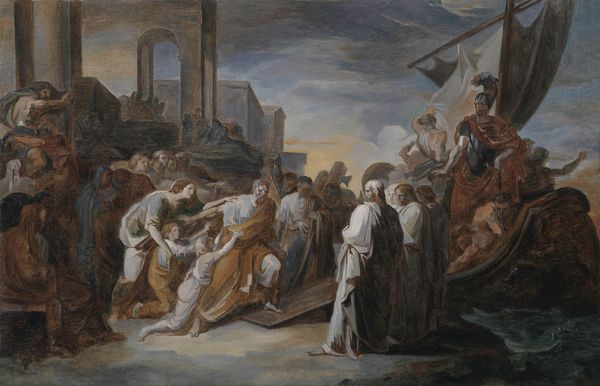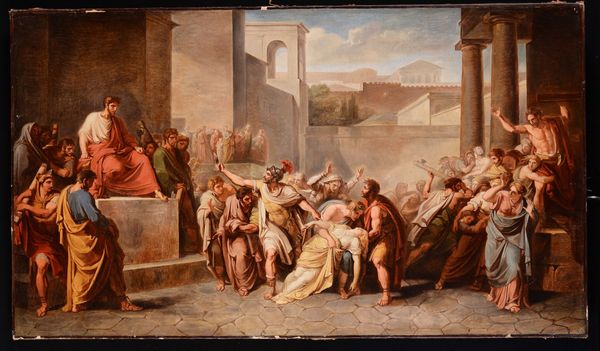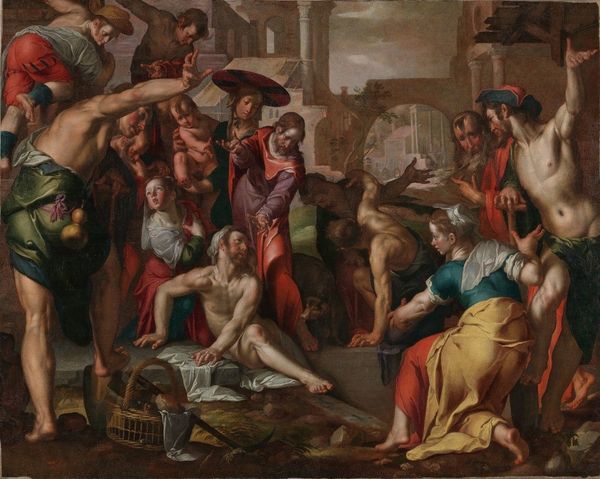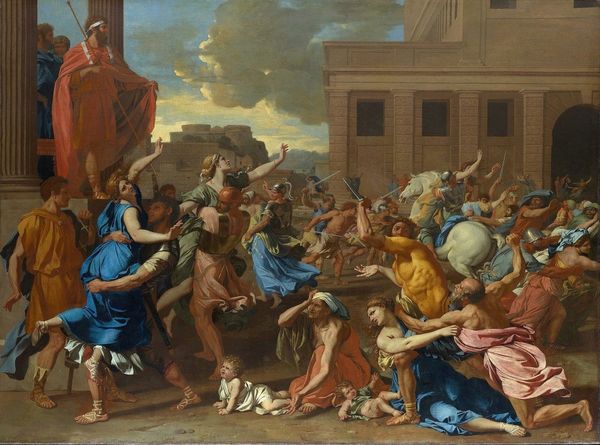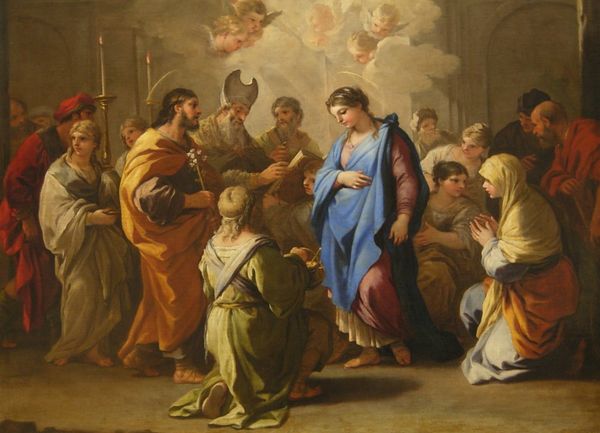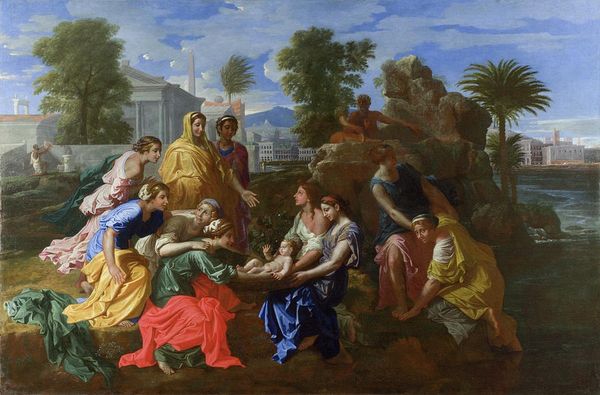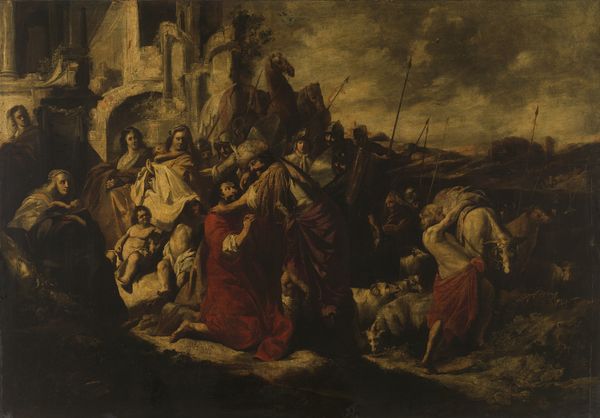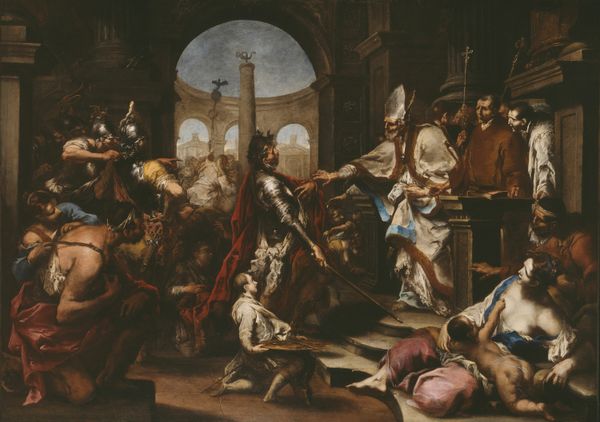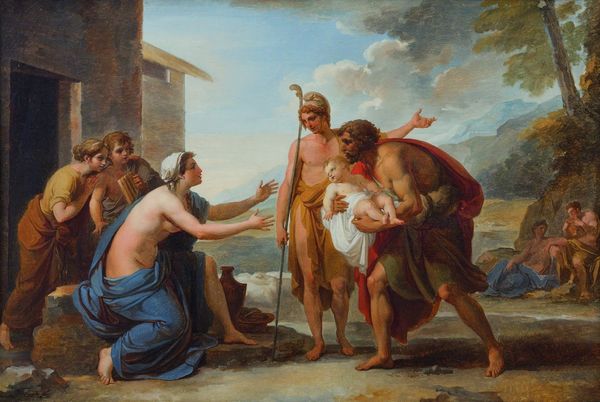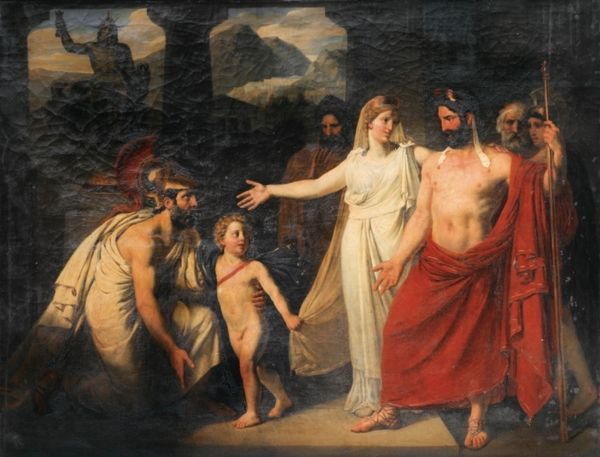
painting, oil-paint
#
neoclacissism
#
painting
#
oil-paint
#
landscape
#
figuration
#
history-painting
#
academic-art
Copyright: Public domain
Curator: This painting is titled *Agrippina Landing at Brindisium with the Ashes of Germanicus*. It was completed by Gavin Hamilton in 1772, and now hangs here at Tate Britain. What strikes you first about this grand scene? Editor: It’s very staged, theatrical even. Like a classical frieze brought to life, though in a very subdued palette, dominated by grey tones, a hint of antique tragedy…almost mournful. Curator: Mournful is a key element here. The painting depicts Agrippina the Elder returning to Italy with the ashes of her husband, Germanicus, a beloved Roman general, who many suspected was poisoned by agents of the emperor Tiberius. Note the prominent placement of the urn she carries. Editor: Absolutely, that urn becomes a powerful symbol of loss but also of injustice. Agrippina is framed by these figures frozen in their own sorrow or sympathy… but tell me, those supporting figures in golden yellow seem rather removed from the scene. Are they symbolic? Curator: In the tradition of Roman art, gestures carry particular significance, functioning almost as a rhetorical language. Their reactions are varied: sorrow, pity, supplication… These express deep civic and personal mourning for the deceased hero while simultaneously expressing Agrippina's deep personal trauma and strength, the almost superhuman control, required of her to become this potent symbol. This echoes older visual motifs. Editor: So, Agrippina transforms into an icon herself… I also can't ignore Hamilton's handling of light. How the architecture recedes subtly, allowing our eyes to be drawn straight to her central figure, even the somewhat bland tonality enhances the impact of this historical event… but how powerful do you think this message truly is? Curator: Roman leaders, through careful self-fashioning and the power of imagery, aimed to be seen as paragons of virtue. It is deeply intertwined with narratives of power and legitimacy. Agrippina is staging grief to be seen in a specific way. To question Tiberius. Editor: It's like a controlled display of public feeling that says much about the values held by society at that time… it still lingers as a universal sentiment. Thanks for revealing that, I find a new appreciation in the emotional artifice of Hamilton's canvas. Curator: A beautiful moment of recognizing what is truly everlasting about that need to memorialize, and share.
Comments
No comments
Be the first to comment and join the conversation on the ultimate creative platform.
